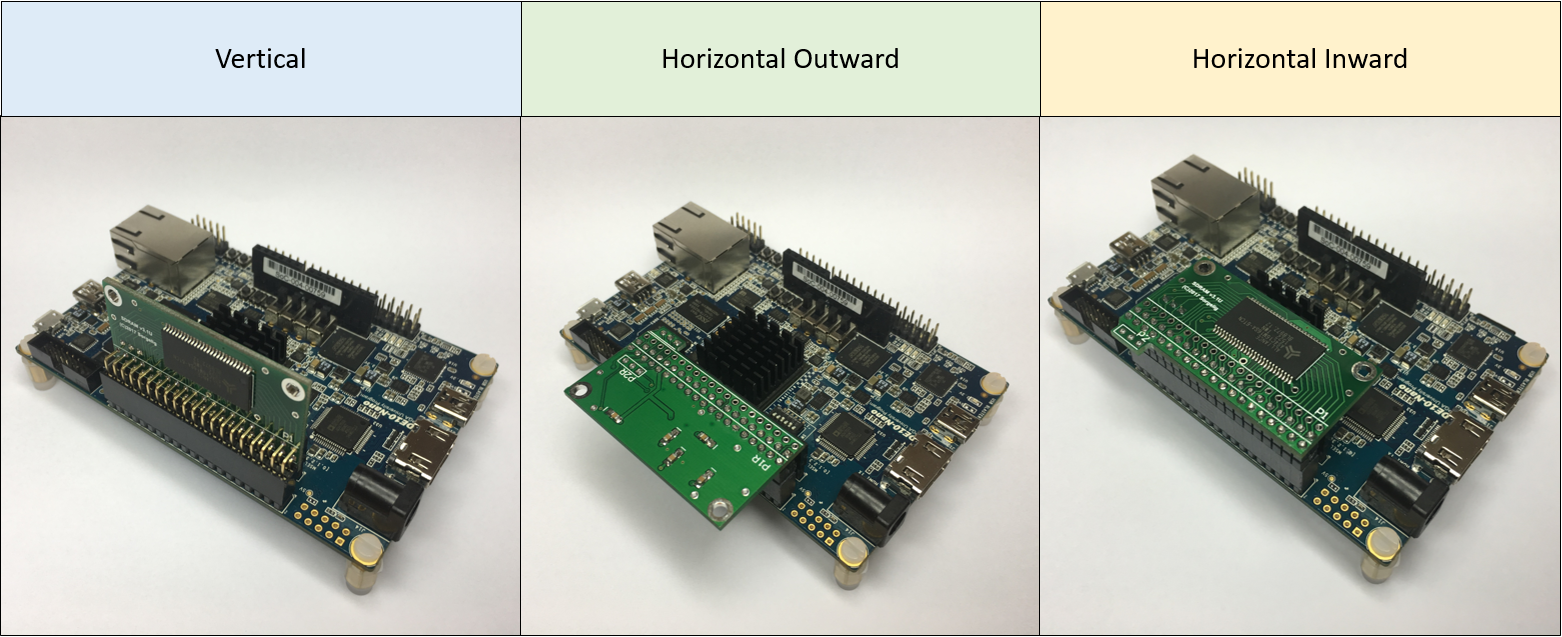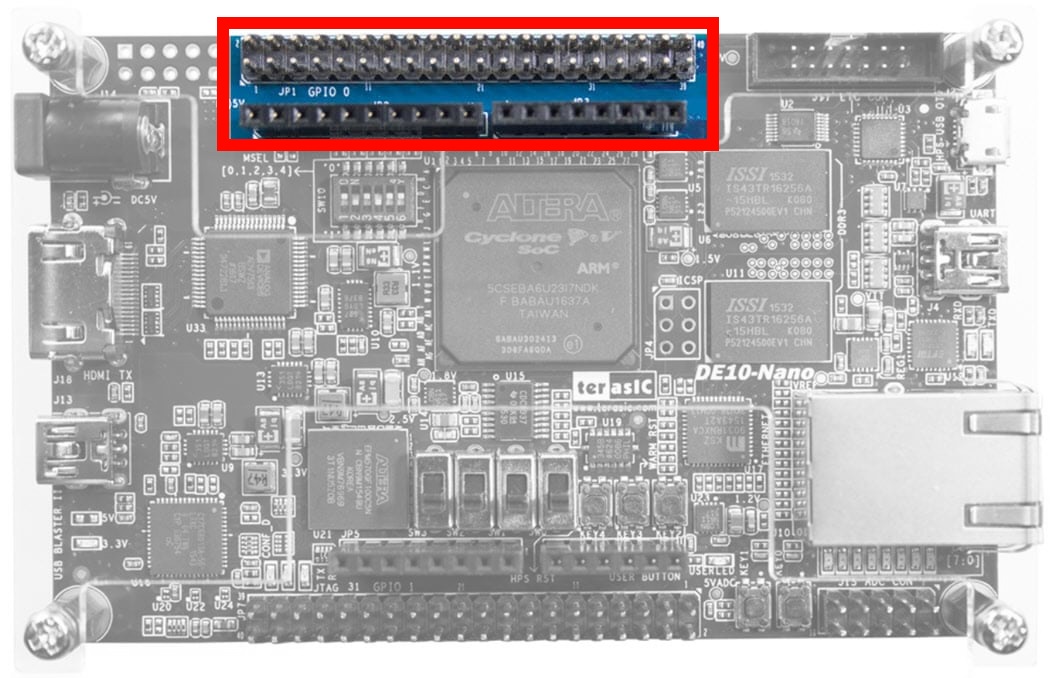SDRAM Boards¶
Actual SDRAM Board Revisions: XS v2.2 and XSD v2.5
Board Types¶

| Advantages | Disadvantages | |
|---|---|---|
| Vertical | Doesn’t increase horizontal dimensions. Doesn’t cover and allows better cooling for FPGA chip. Doesn’t block Arduino GPIO - compatible with future or custom expansions. Easy to attach/detach. | Slightly less maximum working frequency. |
| Horizontal Outward | Doesn’t cover and allows better cooling for FPGA chip. Doesn’t block Arduino GPIO - compatible with future or custom expansions. Higher maximum working frequency. | Increases horizontal dimensions. |
| Horizontal Inward | Doesn’t increase neither horizontal nor vertical dimensions. Higher maximum working frequency. | Blocks Arduino GPIOs - incompatible with future or custom expansions (PCB v3.2 solves this issue). Covers FPGA chip and makes cooling harder. Temperature condition is quite bad. Not compatible with I/O board v4 and newer. |
Cores that requires a SDRAM Board to function¶
Warning
The MiSTer SDRAM Board is a mandatory expansion board for the DE10-Nano FPGA board. The SDRAM is required by most cores of the MiSTer platform. Check the list bellow.
| Name | Speed (MHz) | Comments |
|---|---|---|
| Boot Menu | 100 | Not required, but will use it if found and wipe the memory while running |
| Amiga | 57 | |
| Amstrad | 64 | |
| Archie | 126 | |
| Atari 800 | 57 | Only for memory config >320KB or Cartridge usage |
| BK0011M | 96 | |
| ColecoVision | 43 | |
| Commodore 64 | 64 | |
| Gameboy | 66 | |
| GBA | 100 | Requires 33.5MB for 32MB games |
| MacPlus | 65 | |
| Mega CD | 107 | |
| MSX | 85.9 | |
| NeoGeo | 96 | Requires up to 100MB depending on game |
| NES | 85.9 | |
| QL | 84 | |
| SAM Coupe | 96 | |
| Sega Master System | 96 | |
| SNES | 85 | |
| TSConf | 84 | |
| X68000 | 80 | |
| ZX Spectrum | 112 |
How to Install¶
The SDRAM Board will be inserted into the GPIO 0 Header of the DE10-Nano Board. Three additional pins will be inserted into the Arduino header JP3

Plugging in¶
When Plugging in the SDRAM Board, make sure to support the DE10-Nano from beneath with your thumbs. Forcing in the SDRAM Board without support can bend the DE10-Nano board and permanently damage it.

Removing¶
Removing the SDRAM Board can be tricky for some GPIO connectors and just pulling won’t do it sometimes. For very tight connectors, it is recommended to wiggle the SDRAM Board back and forth to remove the connectors slowly, bit-by-bit. Just pulling with force will often bend the GPIO header.
